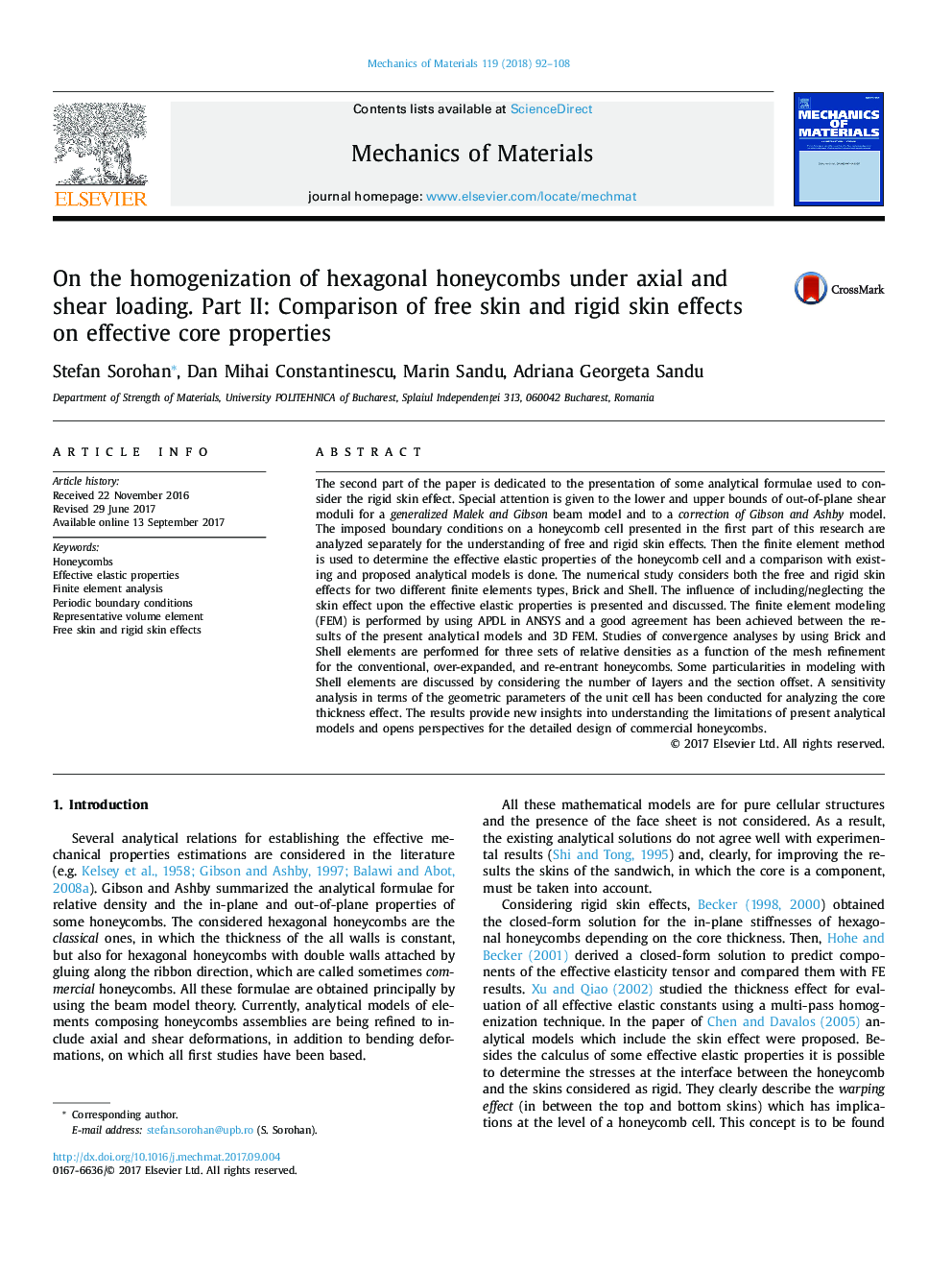| Article ID | Journal | Published Year | Pages | File Type |
|---|---|---|---|---|
| 7178543 | Mechanics of Materials | 2018 | 17 Pages |
Abstract
The second part of the paper is dedicated to the presentation of some analytical formulae used to consider the rigid skin effect. Special attention is given to the lower and upper bounds of out-of-plane shear moduli for a generalized Malek and Gibson beam model and to a correction of Gibson and Ashby model. The imposed boundary conditions on a honeycomb cell presented in the first part of this research are analyzed separately for the understanding of free and rigid skin effects. Then the finite element method is used to determine the effective elastic properties of the honeycomb cell and a comparison with existing and proposed analytical models is done. The numerical study considers both the free and rigid skin effects for two different finite elements types, Brick and Shell. The influence of including/neglecting the skin effect upon the effective elastic properties is presented and discussed. The finite element modeling (FEM) is performed by using APDL in ANSYS and a good agreement has been achieved between the results of the present analytical models and 3D FEM. Studies of convergence analyses by using Brick and Shell elements are performed for three sets of relative densities as a function of the mesh refinement for the conventional, over-expanded, and re-entrant honeycombs. Some particularities in modeling with Shell elements are discussed by considering the number of layers and the section offset. A sensitivity analysis in terms of the geometric parameters of the unit cell has been conducted for analyzing the core thickness effect. The results provide new insights into understanding the limitations of present analytical models and opens perspectives for the detailed design of commercial honeycombs.
Keywords
Related Topics
Physical Sciences and Engineering
Engineering
Mechanical Engineering
Authors
Stefan Sorohan, Dan Mihai Constantinescu, Marin Sandu, Adriana Georgeta Sandu,
